[This is a brief but marvelous and uplifting account of the history, philosophy and aims of the Hitler-Jugend (Hitler Youth) movement that flourished under National Socialism. One of its aims was to further world peace by getting the youth of all nations to communicate in friendship and trust. Disastrously for humanity, it and National Socialism was destroyed by the evil power of Organized jewry
— KATANA.]
PART 2
YOUTH ON THE TRAMP
GERMAN YOUTH IN A
CHANGING WORLD
BERLIN
TERRAMARE OFFICE
FOURTH EDITION
1936
Published by the Terramare Office, Kronenstraase 1, Berlin W 8
Printed by the Terramare Press, Dresdener Strasse 43, Berlin SW 19
Printed in Germany
CONTENTS
GERMAN YOUTH IN A CHANGING WORLD
The Youth Movement
Max Kommerell . . . . . . . . . . . . . . . . . . . . . . . . . . . . . . . 7
Youth
Eduard Wechssler . . . . . . . . . . . . . . . . . . . . . . . . . . . . . . 9
In Memory of German Youth . . . . . . . . . . . . . . . . . . . . . . 10
Hitler-Jugend
Franz Otto Wrede . . . . . . . . . . . . . . . . . . . . . . . . . . . . . 12
Youth Hostels in Germany . . . . . . . . . . . . . . . . . . . . . . . . . 21
Interchange between the Youth
Baldur von Schirach . . . . . . . . . . . . . . . . . . . . . . . . . . . . 27
The Wandering Scholars . . . . . . . . . . . . . . . . . . . . . . . . . . 29
Leadership of German Youth
Rudolf Apel . . . . . . . . . . . . . . . . . . . . . . . . . . . . . . . . . . . 32
Reichsberufswettkampf . . . . . . . . . . . . . . . . . . . . . . .. . . . . 36
Labour Service
Muller-Brandenburg . . . . . . . . . . . . . . . . . . . . . . . . . . . . . 38
Olympic Games Berlin 1936
Carl Diem . . . . . . . . . . . . , . . . . . . . . . . . . . . . . . . . . . . . . . . . 44
[Page 6]
THE WANDERING SCHOLARS
WHEN the youth movement first started in Germany the wandering scholar, with staff and rucksack, was its principal exponent. And he was a good exponent, because he was perfectly right in believing that Shank’s pony is the best method of transportation if one sets out on a journey for the purpose of gaining a knowledge of one’s own country. This spirit logically gave rise to a desire to know the neighbouring countries and is of special importance in the case of Germany; for Germany is surrounded by a ring of powerful nations whose political significance is of the highest importance, and whose histories are part of the cultural development of Europe. The result of this situation was that the German youth movement soon began to cross the national frontiers and explore other countries. The wish to understand one’s neighbours became a ruling factor.
A branch of the youth movement which has lately come into prominence is the international system whereby the youth of various nations exchange visits in organized parties. In the summer of 1935 more than 100 groups of the Hitler Youth, each group consisting of from 10 to 20 members, crossed the German frontiers on exploration tours abroad. With tent and knapsack, they toured France and England, the Balkan States and Poland; into the Baltic countries, northwards as far as Iceland and northwestwards as far as the United States of America. As there were some students who could not meet the costs of such journeys, an arrangement was made to have an exchange of students between the various colleges in different countries. For instance, a German school would invite a number of students from an English school to come and stay as its guests for four or five weeks, and the English school would then in its turn invite the German students to do likewise. Thus it has been made possible to carry out a system of international excursions where the individual student only has to pay his bare travelling expenses.
[Page 29]
German and American High-school students in North Carolina, in the camp of New College, Columbia University
In 1935, 2,500 German boys and girls left Germany as the invited guests of foreign countries. Of these, speaking in round numbers, 600 went to England. 500 to Sweden, 200 to France, 200 to Finnland, 100 to Norway; and the rest, divided into small groups, to other parts of Europe, principally into the countries lying South-East of Germany. For the first time 3 groups, travelled to the United States of America.
These holiday camps have a special significance, because camp life, with its close companionship, enables the youth of both nations to get to know and understand one another. The Reich leader of the Hitler-Jugend was the first to start these international holiday camps. It was something entirely new in international relations when, in the summer of 1934. a group of English students disembarked at Hamburg and were received by a group of the Hitler-Jugend who conducted them to their hostel as guests.
[Page 30]
The site of the first camp was a Saxon house in the Luneburger Heide, the second was established in the mountains in the centre of Germany, and the third at the foot of the Alps. The students in these camps did not come there to discuss questions together but rather to take the spade in the hand and work together. The fourth camp of this kind was established in England in April, 1935, and is probably only the beginning of many more in the future.
The first step in establishing an interchange of students is not always easy. In most cases it is simplified through a mutual understanding brought about by exchanging correspondence. The ambition of almost every German school is to develop an exchange of letters between its students and those of some other school in the neighbouring countries. In the year 1935 about 2,000 letters have been written by German students to Swedish students, about 1,000 to English students, about 1,500 to French students. 1,000 to Norwegian students, 1,200 to Finnish students and an innumerable quantity to the United States of America. German schools are also in correspondence with Polish, Hungarian. Yugo-Slavian, Italian, Spanish, Dutch and Danish schools, and in the Far East with China and Japan, Exchange of letters with Australia is also prolific.
Here there is no question of stilted, formal correspondence, but personal matters are entered into, photographs and snapshots are exchanged. Some times when the other party does not respond with the same enthusiasm, one should not be discouraged, for it generally happens in such cases that a friendly answer comes from some other quarter of the globe.
Anyone wishing “to enter into” such correspondence with German boys and girls would do well to write first to: Deutsche Padagogleche Auslandstelle, Berlin NW40, Kronprinzenufer 13
[Page 31]
Baldur von Schirach and Adolf Hitler
THE LEADERSHIP
OF THE GERMAN YOUTH MOVEMENT
ADOLF HITLER once said to the youth of Germany:
“Youth must be led by youth.”
So he appointed a young leader for the Hitler-Jugend. This was Baldur von Schirach, who has proved that he is fully conscious of his responsibility as leader and that he is capable of forming the Hitler-Jugend. Baldur von Schirach has increased the membership of this organisation from 30,000 to over six millions. Convinced of Baldur von Schirachs ability, Adolf Hitler issued the following order, on the 17th of June 1933: —
An office for the whole of the German Reich is hereby created with the official title “Youth Leader of the German Reich.” The Reich Youth Leader of the National Socialist Party. Baldur von Schirach is appointed Youth Leader of the German Reich. The Youth Leader of the German Reich is at the head of all associations of young people of both sexes and also of the youth organization, of adult associations The foundation of youth organisations requires his sanction.
[Page 32]
The officials appointed by him will take over the duties of the state and communal committees whose tasks are carried out in direct cooperation with the youth organizations.
By this order the Hitler-Jugend was assigned the task in the German State that is fitting for it. The Reich Youth Leadership transferred its offices from Munich to Kronprinzen-Ufer 10, Berlin NW 40.
The first new Youth Leader of the German Reich at once proceeded to complete the extension of his organization. As leader of the entire youth of Germany, he had to create an organization that was capable of including all the various domains concerned with youth.
One of the most responsible tasks is assigned to the staff office which has to select and appoint all the leaders whose names are proposed to it. Welfare, juvenile law and hygiene are dealt with by another department which also deals with all social questions. The entire business side is managed by the administrative department which includes a vast card index register of the members in which the name of each member is recorded with the most exact details. A special sanitary department is charged with seeing that the young people can obtain every kind of sanitary and medical assistance.
The most important and extensive functions are exercised by the section “education and physical fitness”. This section has to provide the young with that spiritual grounding that is absolutely essential for the existence and future of our nation, for the spirit is the determining factor of the body. To school the young and bring them up as men who will be capable one day of taking over the leadership of the state. To see to the physical fitness of the Hitler-Jugend is also one of its tasks. Here sport naturally plays a large part. Not sport for its own sake or for the sake of breaking records but as a means to an end.
Schools for leaders train for this task boys who have proved themselves capable of leading others. A Reich Youth Leader School and Reich Girl Leader School complete the work of the District Leader Schools. The Reich Youth Leadership has established connection with the whole of public opinion by extensive press work. The entire German press now publishes Hitler-Jugend supplements.
[Page 33]
Besides this, the Hitler-Jugend itself owns some all-German and over twenty district newspapers. The all-German newspapers and periodicals issued by the Reich Youth Leadership are published by the Deutscher Jugendverlag, Schiffbauerdamm 19, Berhn NW 7. These include “Das jtinge Dtmtschland”, the official organ of the Youth Leader of the German Reich, “Wille und Macht”, a fortnightly publication, “Die Fanfare”, an illustrated paper of the Hitler Youth, “Der deutsche Sturmtrupp”. the newspaper of the German Youth, and “Jungvolk”, the organ of the German children in the Hitler Youth. The press section also cooperates in the publication of the Youth Hostel periodical Jugend und Helmat and some others.
In connection with the library of the Reich Youth Leadership is a collection of over 20,000 German and foreign fairy tales and books for children from all over the world and which has been placed at the disposal of the Reich Youth Leadership by Dr. Hobrecker.
Foreign youth work is dealt with by a special department which includes the central office for German youth in Europe.
A Commissioner for Youth Associations is in charge of all German youth associations, also those who have not joined the Hitler-Jugend.
Finally, youth hostels are managed by a separate section controlled by the German Youth Hostel Association.
In addition to a Leaders’ Circle, composed of representatives of the various groups of organized youth, the Youth Leader for the German Reich has nominated district and local commissioners for his work in the provinces.
With this great organization, which has not been created for the moment but for the future, Baldur von Schirach, the Youth Leader of the German Reich, will be able to provide those now creating a new Germany with a guarantee for the continuation of the great work that has been begun in our nation. The youth of Germany will follow the path taken by the German nation towards a better future.
Rudolf Apel
[Page 34]
THE REICH APPRENTICES’ COMPETITION
Reichs-Berufswettkampf
BEFORE 1933, when the political struggle was at its height and there were over six million unemployed in Germany, the young people were especially badly affected since it was impossible for them to receive any training in a profession or trade. Hunger and need compelled thousands of young men to earn a few pence somehow or other as unskilled labourers as soon as they had left school, and even these slender earnings had to be given up to the parents to help them to feed the family.
After the National Socialists had taken over the government and had succeeded in reducing unemployment by over four million it became evident that there was a very decided shortage of skilled workers. It was then that the Hitler-Jugend and the German Workers’ Front took the matter in hand. They started a system of professional training for the youth of Germany, culminating in the annual Reich Apprentices’ Competition. The very first of these made it abundantly clear that there was much to be done in this sphere. Young men and women had to be provided with courses of professional training not only to make them fit to compete in the struggle for a living but also to supply the country with people who had received a thorough, all-round training in the trades and professions. It was above all necessary to educate these young people to take a pleasure in their work and their training and to make good and useful citizens of them.
[Page 35]
At the same time they were to be inculcated with the National-Socialist principle that the working community should also be a community of comrades and that the leaders of this community must not only be experts in their own branch but also real leaders of men.
How eagerly the young people welcomed this new principle can be seen from the fact that in 1934 in a single month 282,500 young men and women taking part in 14,350 training courses volunteered to take part in additional courses.
The Reich Apprentices’ Competition for the youth of Germany, this new idea of the Hitler-Jugend, seemed to be an especially suitable method of bringing to the attention of the German youth the importance of a thorough professional training, In 1934 the first of these competitions was prepared and carried out. One million young men and women took part in it completely voluntarily. The second competition, in 1935, already showed a decided improvement in the work done by the young apprentices.
The Reich Apprentices’ Competition and the social work of the Hitler-Jugend are of service to the entire German youth and thus to the nation and its future. The conscientious professional training and the all-embracing health service are designed to produce a generation of healthy and expert workers. The Hitler-Jugend hope that later on the competition will become an Olympiad for all the workers of Germany.
[Page 36]
ONE OF A MILLION IN THE COMPETITION 1935
[Page 37]
THE LABOUR SERVICE IN GERMANY
IN order to gain a clear understanding of the Labour Service in Germany it is necessary to keep in mind certain facts which have been of the utmost importance in its growth and development.
It is not easy for the outsider to appreciate the conditions which led to the introduction of the Labour Service in Germany unless he is able at the same time to appreciate the disastrous effects for Germany of the Treaty of Versailles.
As a result of the Treaty Germany lost 9.5% of her population and over 13% of her area. Thus Germany, already overpopulated, lost more land than population, which only made the problem of over-population more acute, Nor was the situation made any easier by the fact that about a million people returned to the Reich from the ceded territories. At the same time Germany was deprived of all her colonial possessions. One other fact must also be taken into consideration, namely that the land which Germany lost on her easterly and western frontiers, and especially that in the east, was agricultural land of a very high grade so that its loss meant a decrease of almost 30% of the German harvest. In all, Germany was deprived of 27% of her agricultural area.
At the end of the World War Germany was faced with the fact that her food supply situation which had been difficult enough before the War, had reached a state which gave rise to serious anxiety. The German people were very well aware of this as a result of their experience during the War, the loss of which must be ascribed to the fact that Germany was being slowly starved out, Everyone who knows the history of the War and is able to realize the terrible effects of the hunger blockade, knows that Germany collapsed as the result of starvation.
It is only natural that when the War ended the the German people were not able to forget these sufferings in a moment, and it was especially the youth of the country, who had gone through the hungry years 1916 — 1920, in whose memory the horror of these years had been stamped indelibly.
[Page 38]
Student or worker — in the Labour Service everyone does his bit
The same may be said of the soldiers who had fought at the front and had experienced the horrors of the trenches, to which had been added the serious shortage of foodstuffs for the army in the years 1917 and 1918.
And still one more factor must be taken into consideration, namely the ousting of man by the machine, a process which advanced with tremendous strides during the years 1922-1330 and which resulted in making millions of workers superfluous. On top of all this came at last the collapse of the “world economy”.
We in Germany observed all this with eyes which need had made all the sharper. We racked our brains for a solution, and it became abundantly evident to us that only decisive measures on a large scale could help us to overcome the crisis.
It gradually became clear that many thousands of workers must be withdrawn from industry and trade and put to work in other fields, a process that meant nothing more nor less than an industrial revolution. There were too many hands in industry and too few on the land, and thus arose the “back to the land” movement.
[Page 39]
Drainage work in a flooded district
And finally there was one consideration which may perhaps be regarded, as decisive for the foundation of the Labour Service, During the years 1930 — 1933 there were many young men of from 18 to 23 years of age who had never done a day’s work in their life and who had no prospects of ever finding work. They seemed to be condemned to lounge on street corners for the rest of their lives. This was the soil from which Bolshevism hoped to reap a rich harvest.
But — these young men were determined that they should not be doomed to misery and idleness. A mighty reaction began and the best of them rebelled against their lot. For them Adolf Hitler was their one hope, their one hold on life. They took their destiny in their own hands and made work for themselves, and in this they were assisted by the veterans of the War. Thus arose the first Labour Camps.
And then the National-Socialist revolution burst forth.
Already in 1928 the National-Socialist Party had made the introduction of general labour service one of the points or their programme.
[Page 40]
Road-building in the mountains
The Fuehrer. Adolf Hitler, had summoned Colonel Hierl to be one of the leaders of the organization in the Brown House in Munich and had entrusted him with the task of promoting the Labour Service. Two years later, in 1930. Hitler gave his approval to the following principles, which had been worked out by Hierl and were to form the basis of the new plan:
1. The introduction of compulsory Labour Service for all young Germans who are capable of work and in possession of their civil rights, regardless of class differences.
2. Labour Service, which is a service of honour to nation and homeland, to be considered on the same level as service with the colours.
3. Labour Service to be the great training-school of National Socialism.
4. Labour Service to be devoted solely to work which is of benefit to the whole community, economically valuable, and productive, with a view to achieving a sound state of affairs in the foodstuff situation.
[Page 41]
As soon as the Fuehrer had given his approval to these principles Hierl started on the preparatory work for the construction of the Labour Service and made such rapid progress that, immediately after the Fuehrer had taken over the government in January 1933, it was possible to start on the building up of the National-Socialist Labour Service. In this process the already existing National-Socialist training association formed the basis. The Stahlhelm Labour Service was amalgamated and the other organizations of a similar nature gradually dissolved.
At that time, in the spring of 1933, there were many people in Germany who did not understand Hierl’s action and regarded it as dangerous. They were of the opinion that the whole system was designed as an instrument of power in the hands of the National Socialists. All these doubters and critics will have to admit today that they were mistaken. Hierl acted in the right way if he wanted to be able to carry out unhindered his programme of construction, which was complete, well thought out, and above all, clear and simple. We do not say this solely because it has already been justified by the results but because we who had the honour to work hand in hand with him were convinced from the moment when the Fuhrer appointed him as Secretary of State for the Labour Service and Reich Labour Leader (May 1933) that his was the only possible way to achieve the object which we had set ourselves. Filled with this conviction Hierl overcame all of his many opponents, some of whom were very powerful.
Today the Reich Labour Service exists as a State and National-Socialist organization with a strength of some 200,000; today general compulsory Labour Service has been introduced in Germany as a result of Hierl’s calm and determined fight in the service of Fuhrer, nation, and country.
[Page 42]
Foreign Students of Munich University visiting a labour service camp nearby
In the Labour Service Law, which came into force on 1st July 1935, the objects of the Labour Service are described as follows:
“(1) The Reich Labour Service is a service of honour for the German people.
(2) All young Germans of both sexes are obliged to serve the nation in the Reich Labour Service.
(3) The Reich Labour Service is designed to educate the German youth in the spirit of National Socialism and of the national community, that they may have a true conception of work, and above all, a true respect for manual labour.
(4) The Reich Labour Service is designed to carry on work of benefit to the whole community.”
And so 200,000 young men are working day in and day out, each six months in turn and for no financial reward. They are proud and pleased to work, for it is for Germany that they are working and they are filled with the truth of the National Socialist maxim “Work ennobles”. The sons of professional men, of peasants, and of labourers, they stand shoulder to shoulder, live together in comradeship in the same camps, and work together for Germany.
Maller Brandenburg
[Page 43]
THE OLYMPIC GAMES,
BERLIN 1936
THE eleventh Olympic Games of modern times will be held from August 1st – 11th, 1936, in Berlin.
They will be preceded by the Olympic winter sports which will he held at Garmisch-Partenkirchen from February 6th – 16th.
The Games in Berlin will be the fulfillment of an old dream of the German Sporting Associations, which have always wished to pay their tribute to the Olympic idea. The Olympic Games were to have been held in Berlin in 1916 but this was prevented by the War. Today sport has made so much progress in every country that the stadium which was built for 1916 is no longer adequate. By a decision of Chancellor Hitler it has been made possible to enlarge it to a mighty arena capable of holding 100,000 spectators and to convert the surrounding area, which used to be a race-course, into a gigantic sports park comprising a swimming stadium for 10,000 spectators, an assembly ground accommodating nearly half a million people (at the same time a polo field), and smaller stadia for tennis, basket ball, hockey and equestrian sports. There will also be an open-air theatre, a bathing lake, and about a dozen playing fields. In addition, the new sports park will incorporate the “Sport Forum”, i.e., the grounds and buildings of the German College of Physical Education, with its large gymnasiums, boxing rings, etc., its own practice grounds and tracks, and its dormitories and club rooms, The facilities of the College will be increased by the erection of an indoor swimming pool, of laboratories and class rooms and of a dormitory, (“Kameradschaftshaus”) which will be the home of the women athletes during the time of the Games.
[Page 44]
This imposing sports park, with its manifold equipment for all the events of the Olympic Games — with the exception of rowing, sailing and cycling — to be held on the Stadium grounds, will create an ideal centre such as has never previously existed for any contests.
[Page 45]
It will also be the Administrative Headquarters of the Reich Sports Leader, and all the main German sporting associations will assemble in the German Sports Club, which stands in the “Sport Forum”, The cycling stadium will be at a few minutes’ distance from this area, while the rowing regatta will take place in the east of Berlin on the historic course at Grunau; the sailing regatta will be held at Kiel. The Olympic teams have their choice of putting up in hotels or pensions in the city, or they can be lodged in the “Olympic Village” provided for that purpose, on the Los Angeles model, amidst beautiful scenery not far from the Stadium.
For the art competitions (architecture, literature, music, sculpture, painting) there will be a large Olympic Art Exhibition in one of the halls on the city fair ground.
The opening ceremony of the Games will take place on the afternoon of Saturday, 1st August. It will be followed, on the evening of the same day, by a festival play the scene of which will also be the Stadium. The Games will begin on the following Sunday and will last for two weeks. On Sunday August 16, the last competitions and the official closing ceremony will be held. The first week will be devoted to track and field athletics, wrestling, weight-lifting, shooting, cycling and modern Pentathlon. Swimming, rowing, canoeing, basket ball boxing, gymnastic and riding contests will be held during the second week. The fencing, field baseball, football and hockey matches will cover both weeks.
An international motor-car rally and a world meeting of sport-pilots with their planes will be organised on the occasion of the Games. To ignite the Olympic torch, which will burn during the period of the Games on the Marathon Tower above the Stadium, a relay will bear lighted torches from Olympia in Greece to Berlin.
[Page 46]
The seven nations concerned have agreed to cooperate in arranging this relay, which is to establish a symbolic link between the ancient home of the Games and the city of the XIth Olympiad, various international meetings and congresses, such as the International Recreation Congress, are to precede the Games. Lovers of the theatre and music will be presented with special festival programmes during the Olympic weeks.
A special committee, at the bead of which is Dr. Lewald, the former Under Secretary of State, has been formed for the organisation of the Games. The committee’s offices are at 43 Hardenbergstrasse, Berlin-Charlottenburg 2. Fuhrer and chancellor Adolf Hitler has graciously consented to act as Patron of the Games.
The world of sport in Germany is delighted to be able to act as host at the Olympic Games, and the preparations are well under way. A hearty invitation is extended to all the countries in the world and a sincere welcome awaits all who attend. The entire German nation takes part in this invitation, and the Government are also giving their wholehearted support and cooperation. Up to June, 1935, the Olympic committees of forty-eight nations had reported that they would send their teams. Never previously have so many nations taken part in Olympic Games.
We feel sure that the XIth Olympiad will maintain the magnificent tradition of the Games, and above all we hope that it will he a worthy successor to the Games which took place in Los Angeles in 1932, and which, up to the present, are the greatest achievement in the history of modern Olympiads.
Carl Diem
[Page 47]
ILLUSTRATIONS
Lent or made by
Zurcher, Haagen p. 2;
From “Corpus Imaginum” of the Photographische Gesellschaftshaft, Berlin pp, 7, 8;
Rudolf Hatzold, Magdeburg pp, 10 11;
George Bienek, Berlin p 13;
A, Binder, Berlin pp. 14, 15;
Hans Hubmann, Munchener Bildbericht pp. 17, 43;
Pressphoto, Berlin pp 18, 19, 24;
from “Das Deutsche Lichtbild”, Bruno Schultz Verlag, Berlin p.20;
Jul Grosse, Berlin pp. 21, 28; Reichsverband fur deutsche Jugendherbergen p.23;
Foto-Express, Berlin p. 25;
Hitlerjugend, Gebiet Westfalen, Munster p. 23;
Hans Bittner, Berlin p. 41;
from “Jungvolk im Lager”, Verlag Junge Generation, Berlin (Axel von Graefe) p. 31;
from Presse Illustrationen Hoffmann, Berlin p.32;
Max Ehlert, Berlin p. 37;
Hans Reinke, Berlin p. 39;
Estorff-Volkmann, Berlin p. 40;
Schirner Sportbilder, Berlin p. 45.
Cover photograph from Hartmann-Mauritius arranged by Herbert Beyer, Berlin.
——————————————
Version History & Notes
Version 1: Published Jun 22, 2015
__________________
Notes
*
__________________
Knowledge is Power in Our Struggle for Racial Survival
(Information that should be shared with as many of our people as possible — do your part to counter Jewish control of the mainstream media — pass it on and spread the word) … Val Koinen at KOINEN’S CORNER
Note: This document is available at:
https://katana17.wordpress.com/
======================================
Go to >> German Youth in a Changing World – Part 1
Go to >> German Youth in a Changing World – Part 2
PDF of post. Click to view or download (2.0 MB). >> German Youth in a Changing World – Part 2
PDF of complete booklet. Click to view or download (4.0 MB). >>German Youth in a Changing World
Version History
Version 4: Apr 7, 2023 — Updated image links.
Version 3: Jan 6, 2020 — Re-uploaded images and PDFs for katana17.com/wp/ version..
Version 2: Nov 19, 2018 — Improved formatting.
Version 1: Published Jun 22, 2015


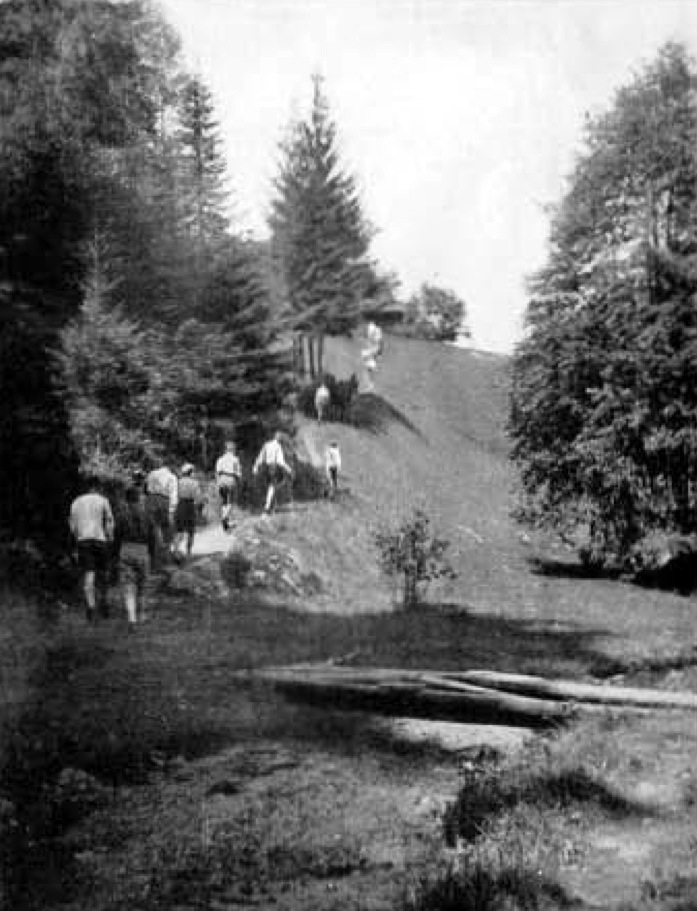
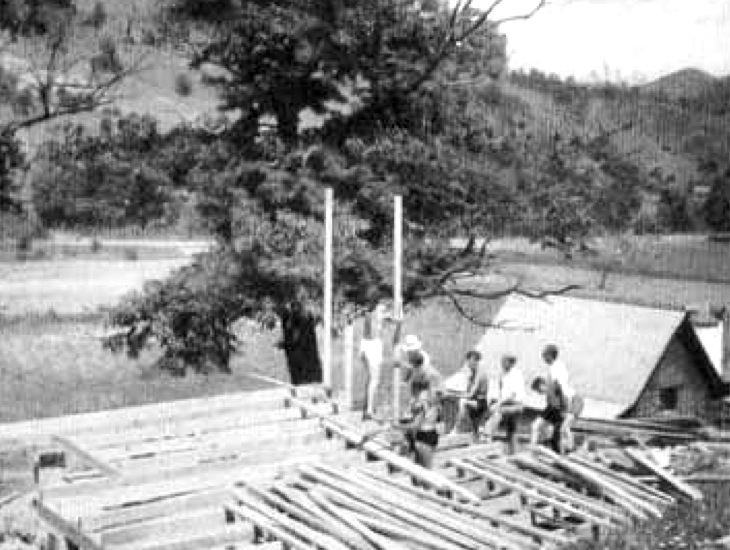

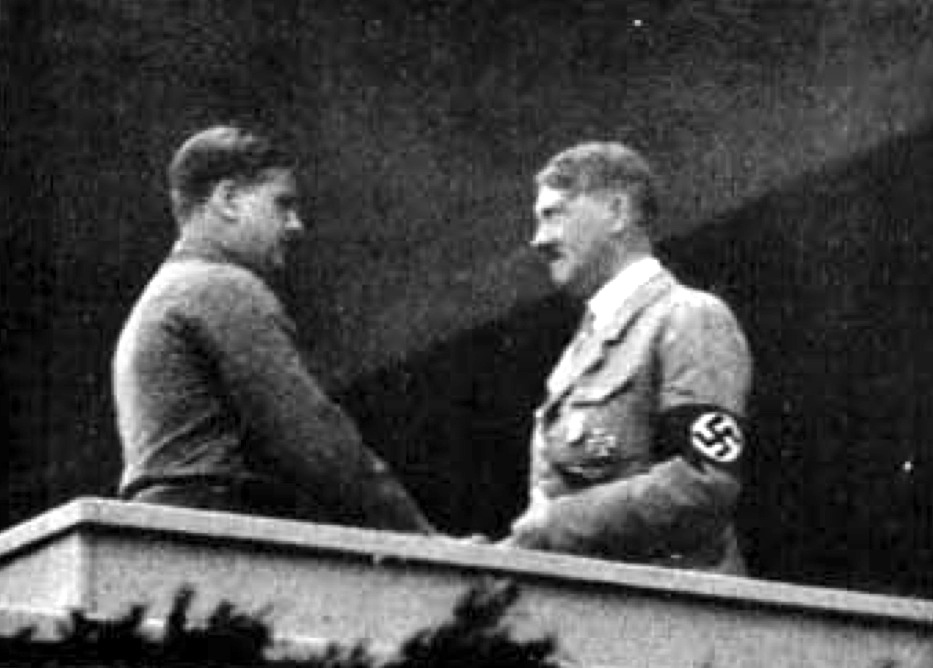
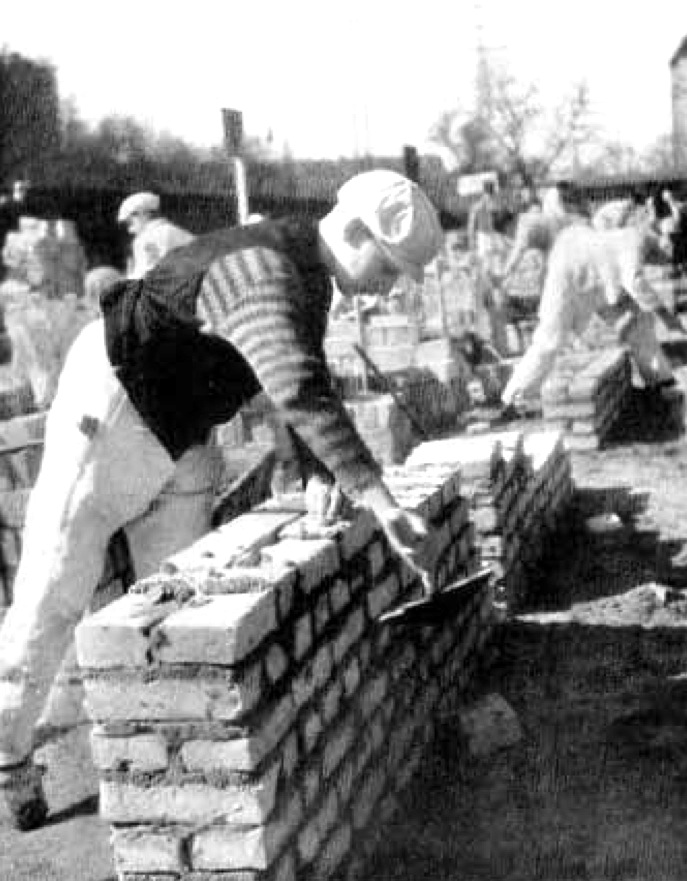
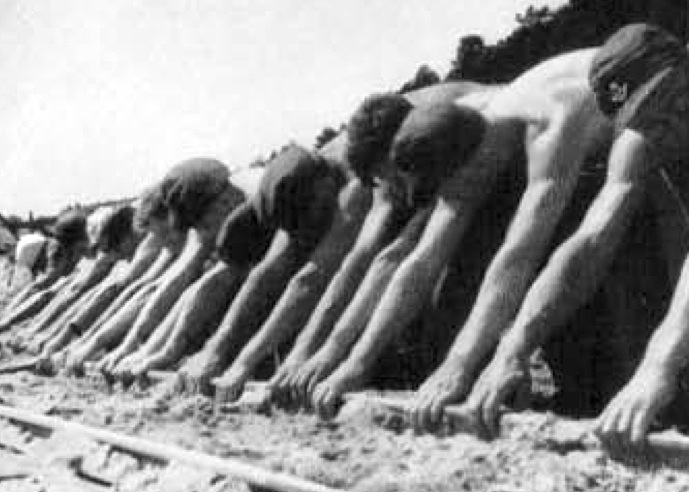

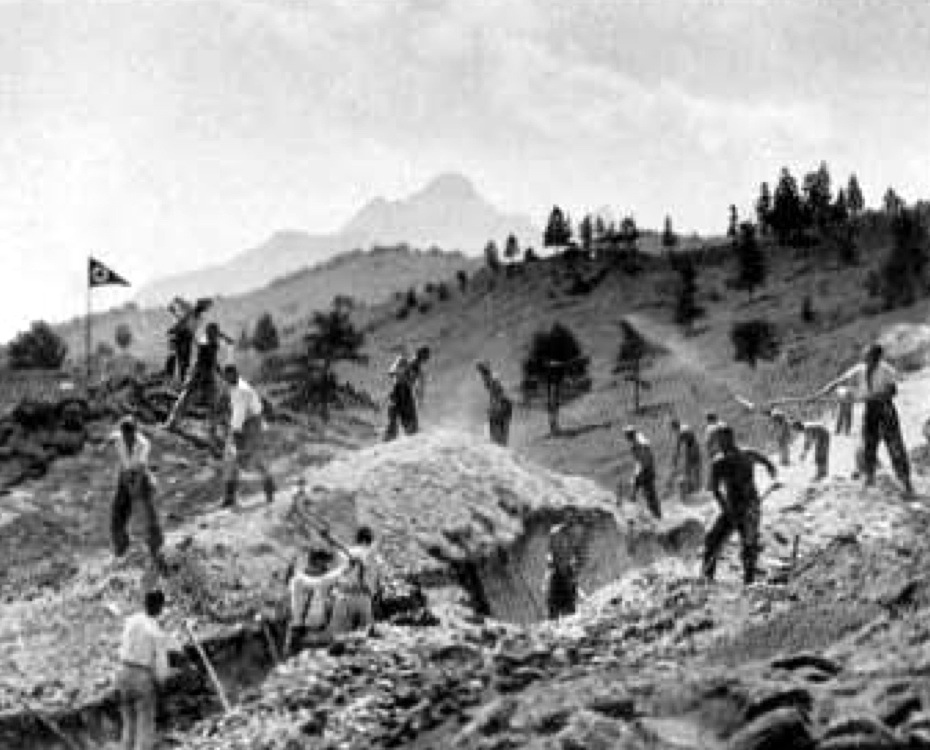
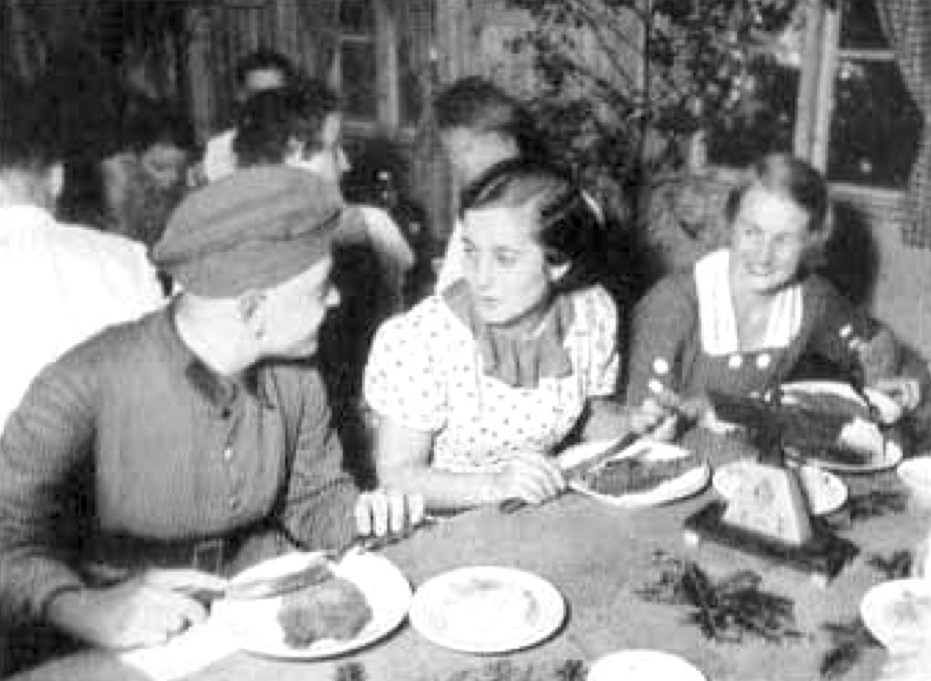

Many German parents did not want their daughters to join Hitler Youth because many of them got pregnant in that organization.
Well, no wonder it was so popular with the youth!
Pingback: German Youth in a Changing World - Part 1 - katana17katana17